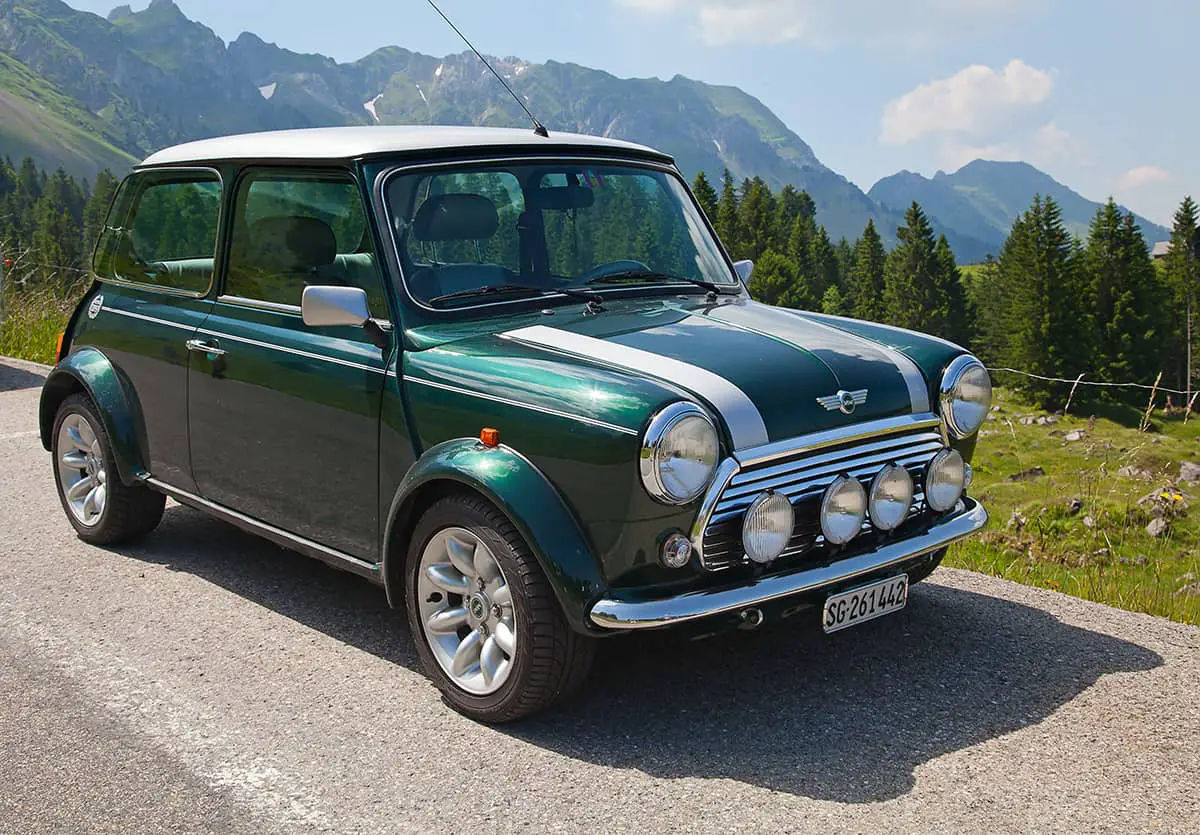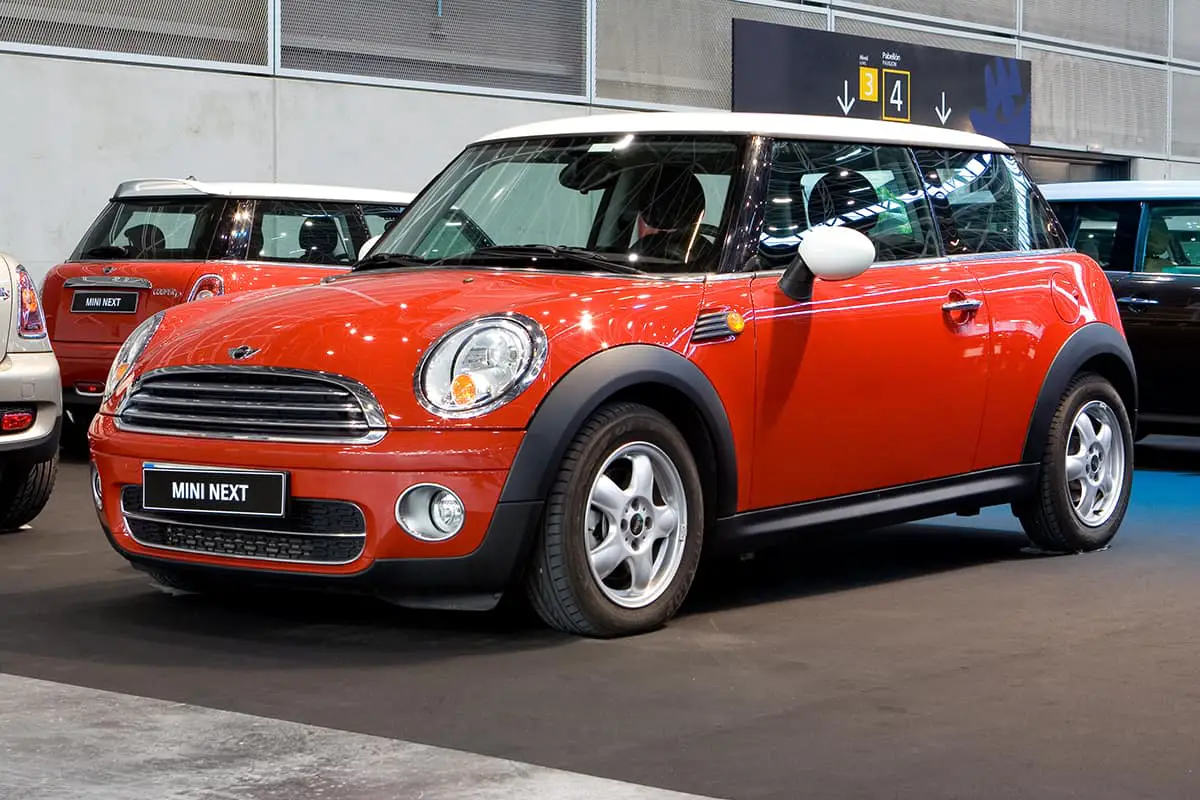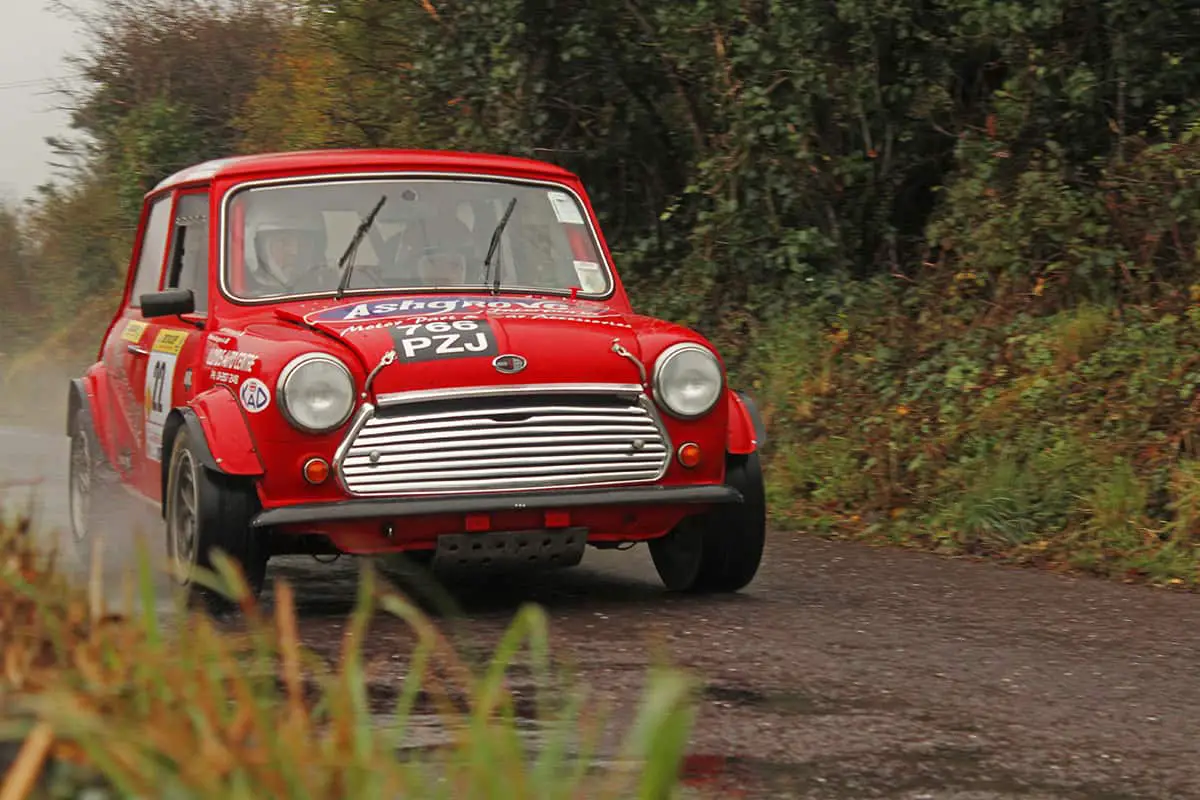The Mini Cooper has journeyed through six decades and has undoubtedly left an indelible mark on the landscape of the car industry. This car brand has seen years of glory marked by robust sales, technological advancements, and high consumer ratings, but it has also faced challenges in other periods.
The best and worst years for the Mini Cooper are as follows:
- Best Years: 1960s, 2001, 2007, 2010, 2014, 2020, and 2023
- Worst Years: Late 1970s, 1990s, and 2008
Today, we will learn a bit more about the specifics of these periods and explore the factors that contributed to its success or decline.
The Origin and Evolution of the Mini Cooper
The Mini Cooper’s history unfolds as an intriguing tale of innovation and persistence.
In 1959, the British Motor Corporation (BMC) launched the original Mini, a car designed by Sir Alec Issigonis with an innovative front-wheel-drive layout that offered more passenger space despite its compact size. Its unique combination of affordability, practicality, and charm swiftly won the hearts of the British public.
In 1961, racing car maker John Cooper tweaked the original design to create the Mini Cooper. The Mini Cooper S, introduced in 1963, featured even greater enhancements.
The 1970s and 1980s were challenging for the Mini Cooper. As larger and more powerful cars became popular, the Mini Cooper, with its compact design and relatively modest performance, began to fall out of favor.
The 1990s marked a key turning point. The rights to the Mini brand were acquired by BMW in 1996. While the Mini continued to be produced, it struggled in the market due to dated technology and design in comparison to other cars in the same category.
The new millennium ushered in a renaissance for the Mini Cooper. In 2001, under BMW’s ownership, the Mini was relaunched with a modern design. It was bigger, safer, and more luxurious, with state-of-the-art technology and a focus on personalization that appealed to a broad range of consumers.
In 2007, the second-generation Mini Cooper was launched with further enhancements in design, performance, and technology. In 2014, the Mini Cooper saw another major upgrade with improved engines, enhanced tech features, and a more refined design, consolidating its place in the premium compact car segment. As the automotive world began to pivot towards sustainability, Mini Cooper joined the green revolution in 2020 with the launch of its first all-electric model, the Mini Electric.
The Best Years for Mini Cooper

There have been some extraordinary years in the Mini Cooper’s timeline. These years are highlighted innovative designs and superior performance.
1960s
The 1960s represented Mini Cooper’s formative years when the brand etched its unique identity. The car’s innovative design, affordability, and surprising performance were instrumental in gaining it an adoring fanbase. It also found success in the world of motorsport, with the Mini Cooper S winning multiple Monte Carlo Rallies between 1964 and 1967. These victories boosted the Mini Cooper’s reputation, making it an icon of the 1960s.
2001
In 2001, the Mini Cooper experienced a revival under BMW’s ownership. The redesigned model, known as the Mini Hatch, retained the charm of the original Mini while adding contemporary enhancements. It featured an expanded size, a more refined interior, advanced safety features, and modern tech offerings. BMW’s emphasis on customization also struck a chord with consumers, and the relaunched Mini Cooper quickly regained its popularity, becoming a darling of the premium small car market.
2007
The 2007 Mini Cooper is a standout model that offers a seamless blend of style, performance, and efficiency. It is characterized by its distinctive design and outstanding handling capabilities. The model is built for city driving with its fuel-efficient engine and nimble agility. The surprisingly spacious cabin enhances comfort, while the stylish and functional interior adds to its appeal.
2010
The 2010 Mini Cooper shines as one of the top-performing compact cars of its year. Its responsive steering, especially in sport mode, positions it as a preferred choice for those who enjoy a spirited drive. Even though it’s an older model, it provides a robust array of technology and performance enhancements to its users. Its two engine options deliver impressive power. Moreover, with an EPA-estimated fuel economy of 28 mpg in the city and 37 mpg on the highway, the 2010 Mini Cooper offers a harmonious balance of performance and efficiency.
2014
The introduction of the third-generation Mini Cooper in 2014 was a landmark in the brand’s journey. This version came with updated engines, a more upscale interior, and a slew of new tech features, including a revamped infotainment system, head-up display, and driver-assistance technologies. The 2014 model also offered improved fuel efficiency, making it a hit among consumers seeking a balance between performance and economy. That’s not to say there weren’t significant issues with the electronics and engine of this model year.
2020
In line with global shifts towards environmentally-friendly vehicles, the Mini Cooper embraced the electric revolution in 2020. The launch of the Mini Electric marked a significant step for the brand. This model, while keeping the traditional Mini Cooper aesthetics, offered a fully electric powertrain that delivered impressive performance and a decent range. The move was lauded by consumers and critics alike and solidified Mini Cooper’s commitment to sustainable motoring.
2023
The 2023 Mini Cooper, marking two decades since its North American debut, continues to captivate with its blend of retro-modern style and exhilarating driving experience. Its distinct design stands out in the crowd, while a sporty chassis tuning offers an engaging drive every time.
Overall, the 2023 Mini Cooper maintains its iconic charm and driver-focused appeal, even as it evolves to meet modern expectations.
The Worst Years for Mini Cooper

Every car brand has its highs and lows, and Mini Cooper is no exception. Some years in its history have been marked by significant challenges, ranging from design faults to reliability issues.
Late 1970s
The Mini Cooper of the late 1970s faced a declining market presence, with the leading cause being a surge in competition from larger cars. Production of the original Mini Cooper ended in 1971, and its successor versions failed to live up to the popularity of the early models. The lack of significant updates and outdated technology and design led to a dip in sales and consumer interest.
1990s
The 1990s were a period of transition for the Mini Cooper. After BMW acquired the brand in 1996, the production of the classic Mini continued, but it struggled to keep up with rivals offering more modern design and technology. The absence of major upgrades during this decade further led to dwindling sales and a drop in market share.
2005
The 2005 Mini Cooper stands out for all the wrong reasons. It amassed a record number of complaints with the NHTSA and even being labeled as the worst Mini Cooper model by certain outlets. The model suffered from issues, including a shift cable that could detach unpredictably, faulty mounting screws for the rear suspension strut, and power steering pump failures. Inaccurate tire information and power steering hose leaks also led to recalls.
2008
2008 stands out as a particularly problematic year for the Mini Cooper. Owners of the 2008 model reported various issues, including failure of the electric power-assisted steering, leaks leading to overheating, and significant transmission problems, particularly in models with automatic transmissions.
FAQs
1. Which Mini Cooper models were recalled?
Several Mini Cooper models have been recalled due to a potential fire risk. The recall includes the 2007-2013 Cooper Hardtop and 2008-2014 Clubman models, encompassing the Cooper S and John Cooper Works variants. The problem lies with the vehicles equipped with a sunroof, where temperature fluctuations can damage the drain hose. If detached, water can infiltrate the car’s interior.
2. What are the most common problems with Mini Coopers?
Common problems reported in Mini Coopers, particularly those manufactured between 2002-2016, include rapid clutch wear leading to damage in the manual transmission. Mini models produced between 2002-2007 and in 2012 have been known to experience issues with the electro-hydraulic power steering system due to a defective cooling fan, often resulting in power steering pump failure.
Automatic transmission failure, though not the most frequent, is one of the most expensive issues to fix. Additionally, first and second-generation Mini Coopers have reported leaks from the plastic water pump and thermostat housing.
3. What are alternatives to the Mini Cooper?
If you’re in the market for a used Mini Cooper but also want to explore other options, there are several comparable vehicles to consider:
- Honda Civic: The Civic is known for its reliability, fuel efficiency, and high-quality interiors. It’s available in sedan, coupe, and hatchback models, providing a range of options for different preferences.
- Volkswagen Golf: The Golf stands out with its high-quality interior, punchy engines, and well-balanced handling. It’s also available in a performance-oriented GTI version.
- Ford Fiesta: The Fiesta is a fun-to-drive alternative with a sporty handling similar to the Mini Cooper. The ST version offers robust performance.
- Fiat 500: If you’re drawn to the Mini Cooper for its unique styling, the Fiat 500 might catch your eye. It also provides a fun driving experience, albeit with less refinement.
- Mazda3: Available as both a hatchback and a sedan, the Mazda3 offers a blend of sportiness and luxury with a well-appointed interior and engaging handling.
- Audi A3: If you’re considering a higher-end Mini model, the Audi A3 offers a premium interior, robust performance, and a high level of refinement.






